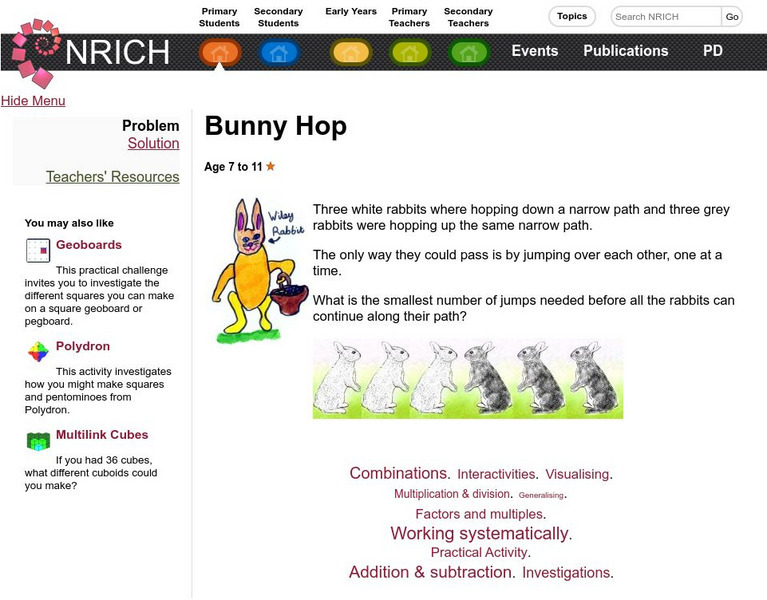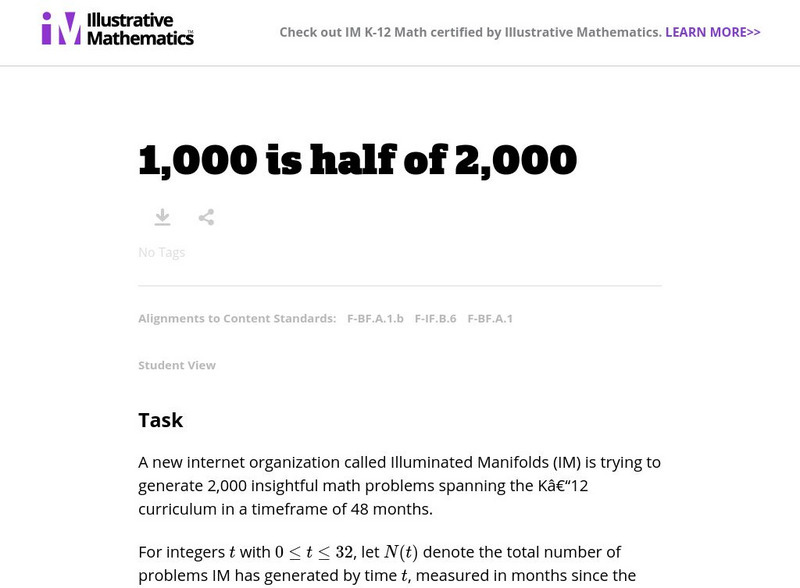Hi, what do you want to do?
Writing Fix
Writing Fix: Ace: Reading Mathematics [Pdf]
This site includes a graphic organizer to help students use the ACE acronym to help them read word problems with high comprehension. In the graphic organizer, students' reading of word problems requires them to "ask" [A], "choose" [C],...
Writing Fix
Writing Fix: Ace: Writing Mathematics [Pdf]
In this graphic organizer, steps for solving word problems are included. Questions for students to ask themselves for what to do to "answer" [A], "computer" [C], "check" [C], and "explain" [E] are included. [Requires Adobe Reader.]
PBS
Pbs: Mathline Creature Feature Lesson Plan [Pdf]
An interdisciplinary math, science, and language arts lesson that engages students in an exploration of statistics. Through a study of various forest climates, students utilize data collection and analysis, classification, and graphing....
Varsity Tutors
Varsity Tutors: Web English Teacher: Dr. Seuss Lesson Plans
What is your favorite Dr. Seuss story? Web English Teacher may be offering you resources to teach it right here! Also contains links to biographical information.
Other
Manitoba Model Forest Network: Sustainable Forest Management (Grade 11) [Pdf]
This 167-page Science unit on forest management looks at the different ways humans have managed Manitoba forests throughout history. It explains the ways we harvest our forests, the products they provide us with, and what the future...
University of Cambridge
University of Cambridge: Nrich: Bunny Hop
You will want to "hop" right on this problem and see if you can find a solution at this one page website. Then you can check it right there.
University of Cambridge
University of Cambridge: Nrich: Alphabet Blocks
Help Santa and the elves keep track of how many blocks they need for their alphabet blocks. Solution provided.
University of Cambridge
University of Cambridge: Nrich: Shutting Puzzle
Sharpen your problem solving skills and figure out a solution for this interesting problem. The solution is on this one page website so that you can check your answer.
Alabama Learning Exchange
Alex: Beyond the Earth Part I
Students will access prior knowledge of the solar system by completing a graphic organizer. After participating in a teacher lecture and whole group discussion, the students will work in collaborative groups to create a...
Illustrative Mathematics
Illustrative Mathematics: F Bf 1,000 Is Half of 2,000
This task is about an online mathematics organization that is trying, over a four-year period, to generate 2,000 math problems that cover all grades. This real-life modeling task could serve as a summative exercise that draws on many...
University of Cambridge
University of Cambridge: Nrich: Shapes on the Playground
On this one page website the problem will require you to use your problem solving skills to find your solution. You can then check it right at the website against the solution they have available.
University of Cambridge
University of Cambridge: Nrich: Plates of Cookies
As you start to work on this problem, keep in mind that in England cookies are called biscuits. Solution provided.
University of Cambridge
University of Cambridge: Nrich: Creating Cubes
On this one page website use a table to help you organize the information so that you can solve this cube problem. When you are finished you can check your answer right at the website.





![Writing Fix: Ace: Reading Mathematics [Pdf] Graphic Writing Fix: Ace: Reading Mathematics [Pdf] Graphic](https://static.lp.lexp.cloud/images/attachment_defaults/resource/large/FPO-knovation.png)







